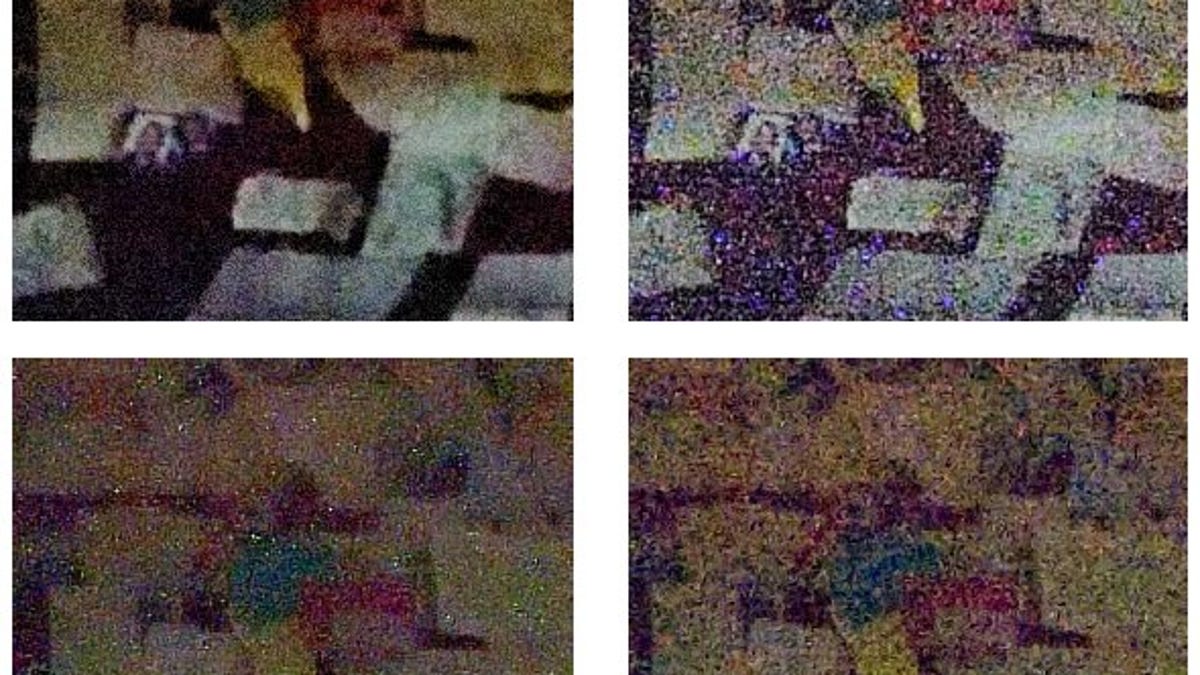New DxO Optics Pro aims for lower photo noise
DxO Labs says the new version of its raw image editing software can cut noise to extend camera abilities by a full F-stop.
DxO Labs announced a new version of its raw image editing software Tuesday that sports what the company says is a streamlined, more adaptable interface and an ability to extract a better ultimate image from those that begin with lots of noise.
DxO Optics Pro is designed for the sometimes laborious process of converting raw images that come from higher-end digital cameras into more easily viewed and handled formats such as JPEG. Although it takes work, using raw images can provide more flexibility and quality than using JPEGs straight from the camera--and with the new DxO Optics Pro, lower noise at high ISO settings, the company said.
Specifically, the noise reduction technology in DxO Optics Pro version 6 can reduce noise well enough to effectively give a photographer one more usable F-stop out of a camera than the previous version did, said Cyrille de La Chesnais, director of sales and marketing for photography at the Paris-based company. That means a photographer could shoot at a faster shutter speed or in dimmer conditions.
That can be useful especially with modern SLRs; Canon's 5D Mark II and Nikon's D700 can both shoot at an extreme ISO of 25,600, and Canon's new 1D Mark IV and Nikon's new D3S can shoot at a whopping ISO 102,400. The images are extremely noisy in those cases, but noise reduction can help extract a more useful image. However, raw processing software can be slow even on machines with abundant processing power.
Getting a one F-stop improvement means a photographer could use ISO 25,600 instead of holding the line at 12,800. Alternatively, for a camera such as Canon's G10 high-end compact that tops out at ISO 1,600, photographers can effectively shoot at ISO 3,200 by underexposing the image by a full stop then brightening it later in software.
The DxO Optics Pro 6 also includes new sharpening controls that offer finer control over sharp-contrast areas. Also new is an interface that's designed to adapt better so it can be either simpler for novices or complex for advanced users, de La Chesnais said.
There are a variety of software packages for raw image conversion; prominent alternatives include the Adobe Systems' Photoshop Lightroom and the Adobe Camera Raw function within Photoshop CS4; Apple's Aperture; Bibble Labs' Bibble; Phase One's Capture One; ACDSee Pro; Google's Picasa; and a handful of packages included with cameras. Lightroom and Aperture are richer packages that also are for cataloging and organizing files; the newly released Lightroom 3 beta lists improved noise reduction as one major feature, and Adobe Camera Raw uses the same algorithms.
DxO Optics Pro is designed to fit gracefully into a Lightroom workflow, de La Chesnais said, so people can use both packages in combination.
"Lightroom is good software for image management. This is not our business," de La Chesnais said. "There's no way we can compete with Adobe in this area. We see our differentiation in the image processing and image quality areas. In this respect, we're leading the way."
One standout feature of the DxO Optics Pro is the ability to automatically correct for various lens problems such as chromatic aberration, pincushion or barrel distortion, and vignetting that darkens the corners of a picture's frame. The automation is based on extensive lab tests of different cameras with different lenses.
The new version of DxO Optics Pro has 200 new data modules of lens-camera combinations, increasing the total to 1,600, and the modules now load seamlessly as a photo is opened for editing rather than requiring the photographer to load it manually. Olympus SLR cameras now are supported in the new version.
DxO Optics Pro is available Tuesday for Windows and will arrive in early 2010 for Mac OS X, de La Chesnais said. The standard version costs $109 and elite costs $199, though there's a 33 percent discount through December 31. For upgrades, the costs are $79 for the standard version and $119 for elite, before a 40 percent discount through the end of the year.


